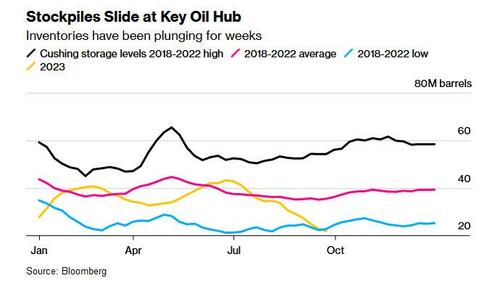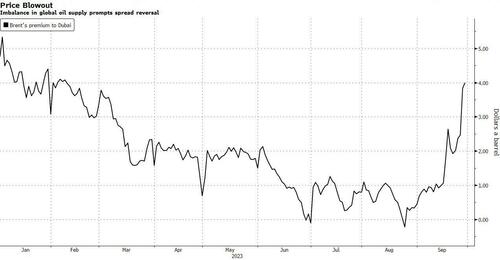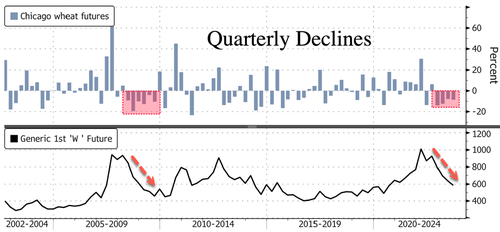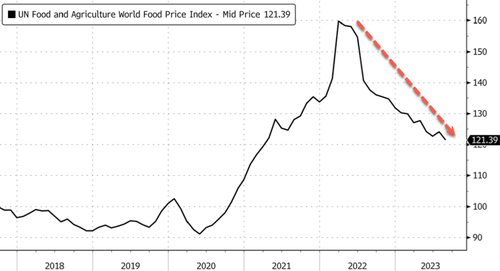Is The US Military Laying The Groundwork To Reinstitute The Draft?
Authored by Zachary Yost via The Mises Institute,
The most recent edition of the US Army War College’s academic journal includes a highly disturbing essay on what lessons the US military should take away from the continuing war in Ukraine.
By far the most concerning and most relevant section for the average American citizen is a subsection entitled “Casualties, Replacements, and Reconstitutions” which, to cut right to the chase, directly states, “Large-scale combat operations troop requirements may well require a reconceptualization of the 1970s and 1980s volunteer force and a move toward partial conscription.”
An Industrial War of Attrition Would Require Vast Numbers of Troops
The context for this supposed need to reinstate conscription is the estimate that were the US to enter into a large-scale conflict, every day it would likely suffer thirty-six hundred casualties and require eight hundred replacements, again per day. The report notes that over the course of twenty years in Iraq and Afghanistan, the US suffered fifty thousand casualties, a number which would likely be reached in merely two weeks of large-scale intensive combat.
The military is already facing an enormous recruiting shortfall. Last year the army alone fell short of its goal by fifteen thousand soldiers and is on track to be short an additional twenty thousand this year. On top of that, the report notes that the Individual Ready Reserve, which is composed of former service personnel who do not actively train and drill but may be called back into active service in the event they are needed, has dropped from seven hundred thousand in 1973 to seventy-six thousand now.
Prior to the Ukraine war, the fad theory in military planning was the idea of “hybrid warfare,” where the idea of giant state armies clashing on the battlefield requiring and consuming vast amounts of men and material was viewed as out of date as massed cavalry charges. Instead, these theorists argued that even when states did fight, it would be via proxies and special operations and would look more like the past twenty years of battling nonstate actors in the hills of Afghanistan. In a recent essay in the Journal of Security Studies, realist scholar Patrick Porter documents the rise of this theory and the fact that it is obviously garbage given the return of industrial wars of attrition.
As military planners have woken up from the fevered dream of imagining that modern war consisted of chasing the Taliban through the hills with complete and overwhelming airpower, they have similarly started to wake up to the idea that industrial war has vast manpower requirements and that seemingly the only way to fill these requirements is by forcing young people into the ranks. That has certainly been the only way Ukraine has been able to maintain its forces, although it has required increasingly draconian measures to do so as conscripts face attrition rates of 80 to 90 percent by Ukraine’s own admission.
Obviously, the reintroduction of conscription is an extremely disturbing prospect given America’s propensity for getting involved in meaningless wars that accomplish nothing other than empowering our enemies, killing and maiming our soldiers, and wasting vast resources.
This is especially true given the unstated assumptions implicit in this paper. Who is the enemy that would be inflicting thirty-six hundred casualties a day? A war in the Pacific against China would primarily be a naval and airpower war with an extremely limited role for the army (even the current inept regime seems unlikely to be stupid enough to try and wage a land war against China) which obviously leaves Russia as the main adversary that would require the US Army to round up conscripts to feed into the attritional meat grinder.
There Is No American National Interest That Requires a Standing Army
However, while these manpower shortages may be a valid concern for someplace like Russia, Ukraine, or Poland, we here in the US are quite fortunate that we have no compelling national interest that would require us to engage in an industrial war of attrition in Eastern Europe.
To the extent we are at risk of becoming involved in such a disastrous mess, it is entirely of our own doing via the entangling alliance known as the North Atlantic Treaty Organization and our leader’s own messianic gnostic crusades for democracy or whatever pseudo religious ideology is presently in vogue.
The US is blessed as being the most secure power in history. We are the hegemon of the western hemisphere, with vast moats in the form of the Atlantic and Pacific Oceans that no other state has the capability to project military force across, and all our neighbors are weak and relatively friendly. We are not at any risk of being forced to fight an industrial land war on the home front. Any war the army would be used in would be as an expeditionary force fighting in the eastern hemisphere, where we have no compelling defensive need to do so.
From the beginning of the US, there have been warnings against the dangers of both entangling alliances and standing armies. The best solution to the military recruitment crisis is to simply abolish the standing army and not plan to wage a costly and pointless war on the other side of the planet that would result in trillions of dollars down the drain and who knows how many tens or hundreds of thousands of Americans being killed, maimed, and psychologically scarred.
Tyler Durden
Sat, 09/30/2023 – 18:30
via ZeroHedge News https://ift.tt/LosUy08 Tyler Durden


















